Last month I shared a few reviews for cheap Zigbee rain sensors from the Tuya ecosystem. These included a very interesting solar powered model, white labeled as model Tuya XFY. The other alternative, which I preferred, was the eWeLink branded MS1 sensor powered by two AA batteries instead of solar. Interestingly and rather ridiculously, someone also decided to make a non waterproof rain sensor of all things. Do not buy this model but do read the review for some laughs.
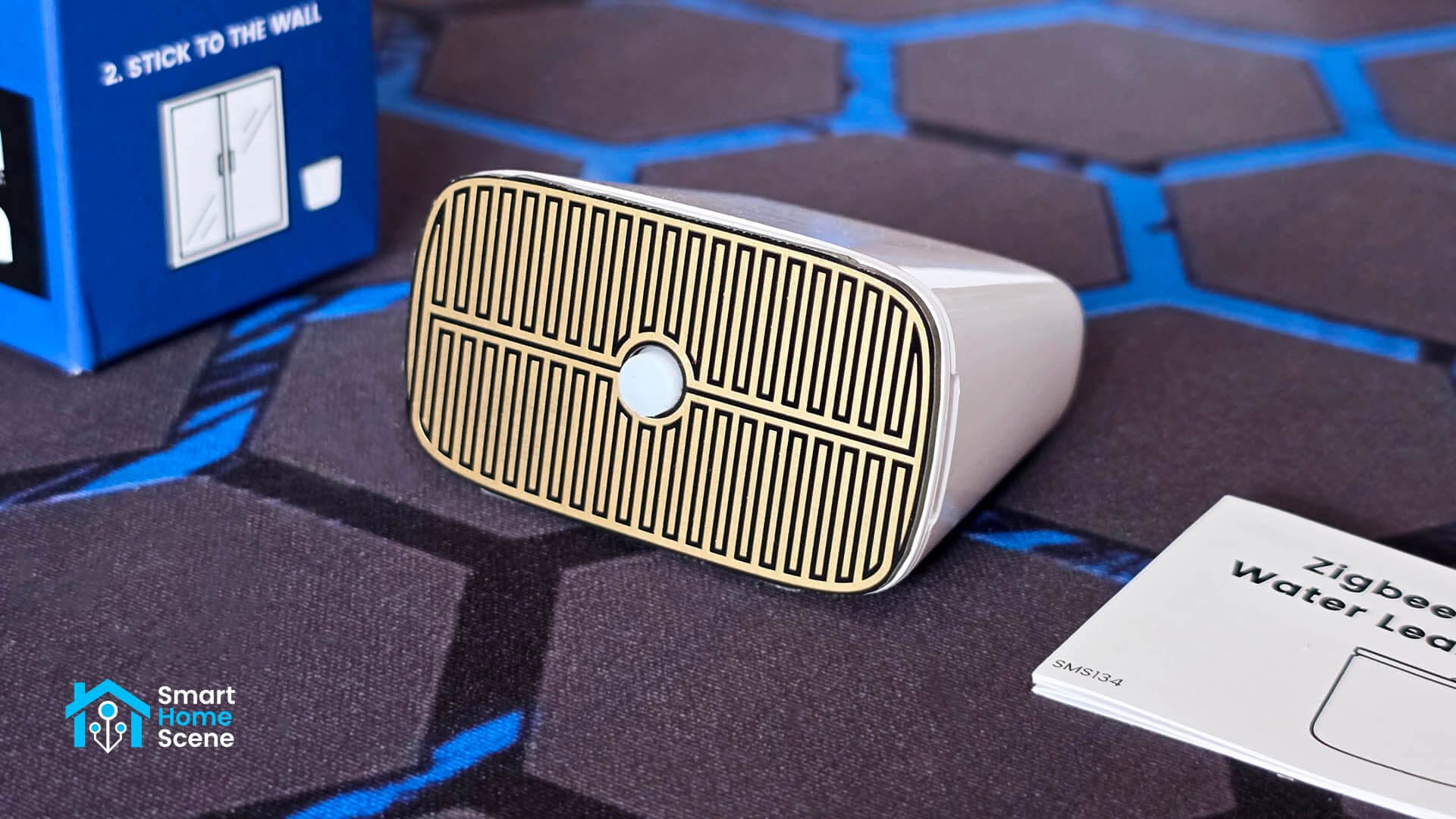
In this review I’m sharing my experience with the last rain sensor I tested, labeled as the Tuya Rain Sensor SJ100. It has an IP67 ingress rating, which in theory means it should be fully protected against dust and able to withstand water immersion, if that rating can be trusted. You can find it on AliExpress for less than $15.
Package Contents and Disassembly
This Tuya Rain Sensor SJ100 ships in a small box containing the device itself, a user manual and a CR2450 battery pre-installed. The device is very small, measuring 45x41x25mm and weighing only 28 grams. The product images on AliExpress don’t reflect this, and the device much bigger. I actually love that it’s so small, it just means it can be installed on a window much easier.
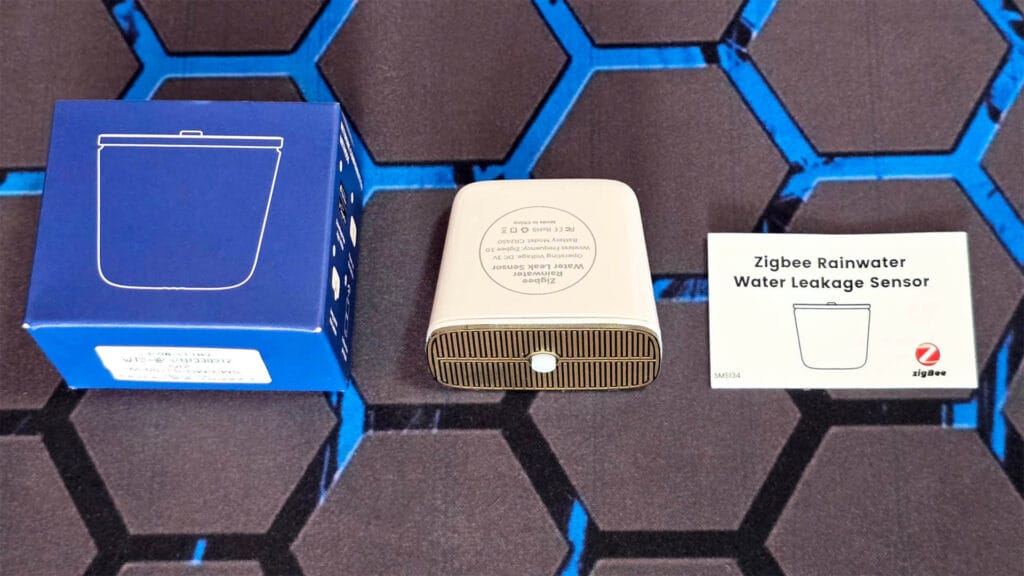
It’s very easy to open this sensor. You just need a small screwdriver to pry off the top plate from the bottom case. The device itself is quite simple, containing only a small PCB with the battery, communication module, and detection plate. The plate connects to the PCB with a two-wire JST connector that slots neatly into place.
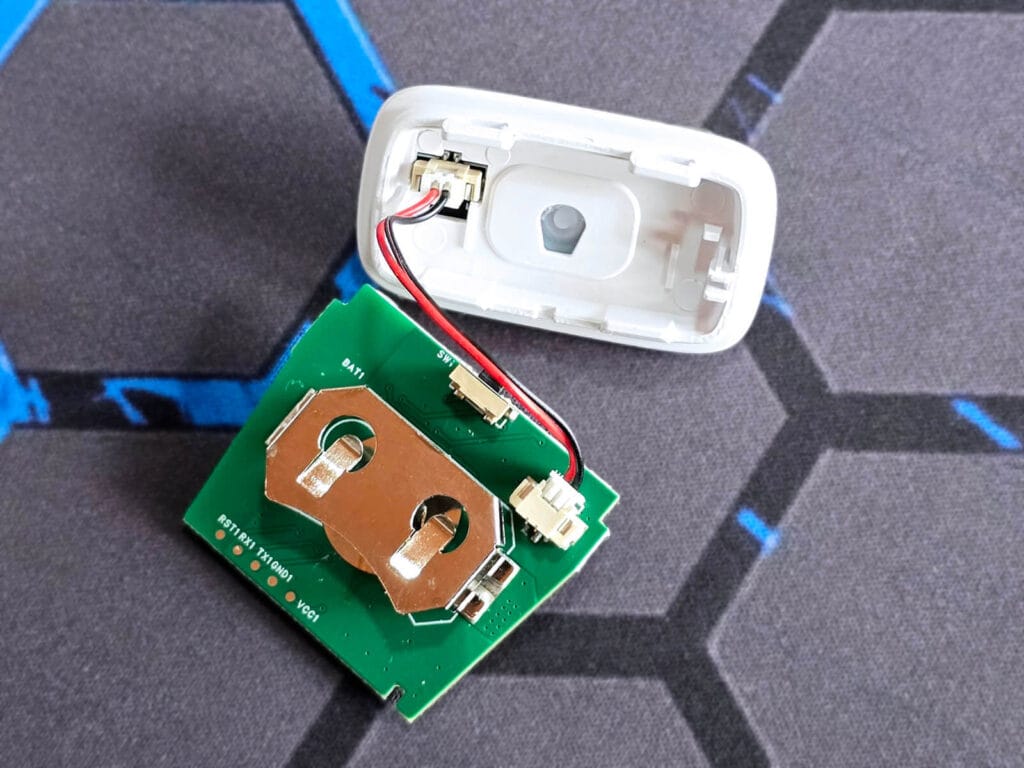
This Zigbee rain sensor uses the Tuya ZTU [Datasheet] module. This SoC is one of the most common connectivity chips found in battery-powered devices and I come across it all the time. It’s well optimized for low power consumption, which explains its popularity. For instance, the solar-powered rain sensor also uses it, as does the Zigbee seat pressure sensor and many other devices.
On the bottom side of the PCB is the battery holder slot. This device uses a CR2450 battery, which is a better choice than a single CR2032 cell. It should provide longer battery life, although the claimed two to three years seems optimistic. In my experience, you can expect around one year of use, which is still good.
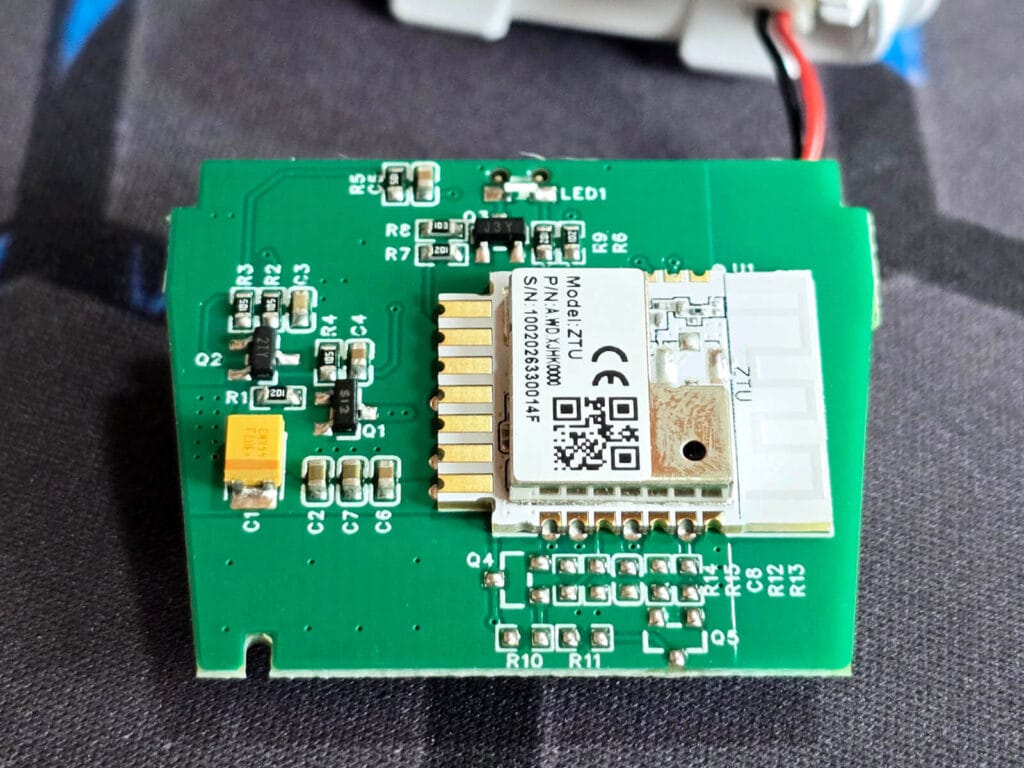
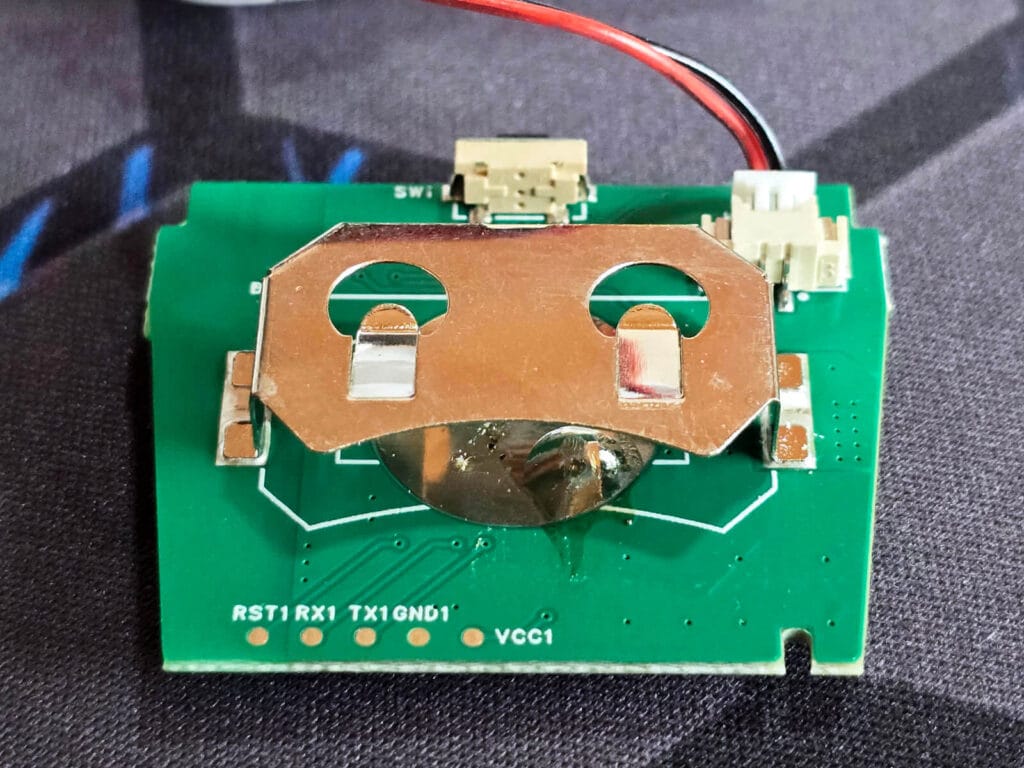
Now for the interesting part. This sensor claims an IP67 ingress protection rating, which means it should be completely dust-tight and capable of withstanding immersion in water up to one meter deep for about 30 minutes.
A rubber ring goes around the cover of the detection plate, creating a seal once it’s slotted into the plastic housing. The button is also rubberized and has its own molded gasket, designed to keep out both moisture and dust. Around these two areas, there is a noticeable amount of glue or sealant, most likely applied to strengthen the waterproofing.
However, based on the build quality and the way the seals are applied, I would say the protection level depends heavily on assembly precision. The seals look functional, but the excess glue around the button and detection plate suggests that consistency may vary between units. My estimate is that this device will survive rain and splashes without issues, but I would not completely trust it for full IP67 submersion.
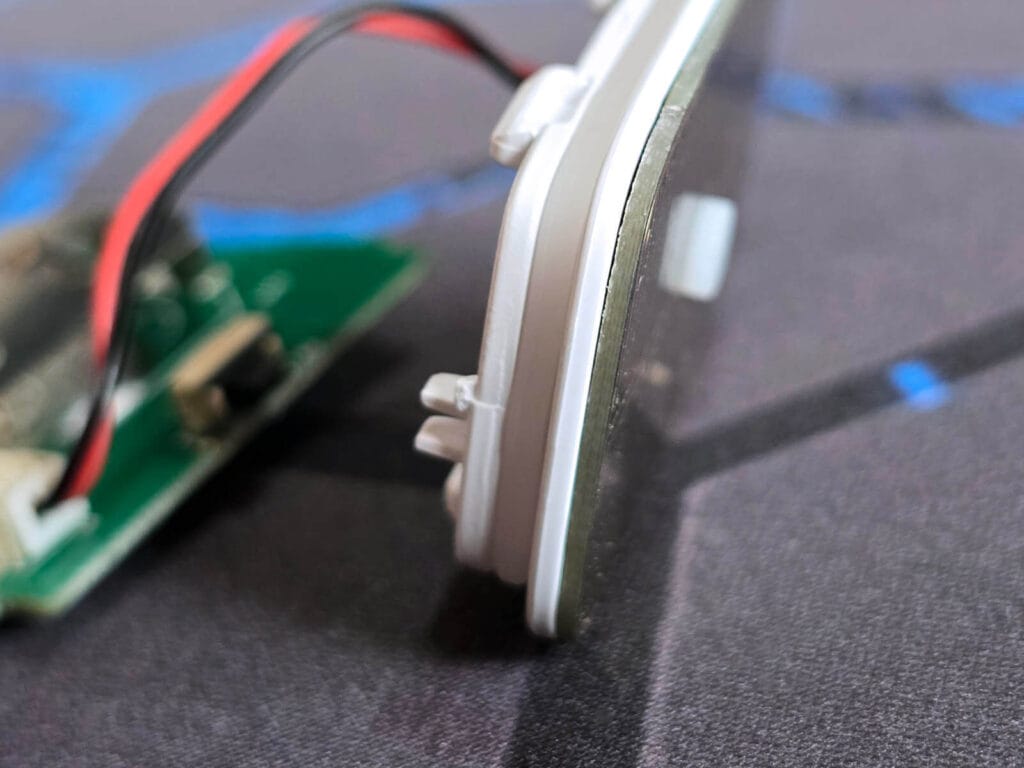
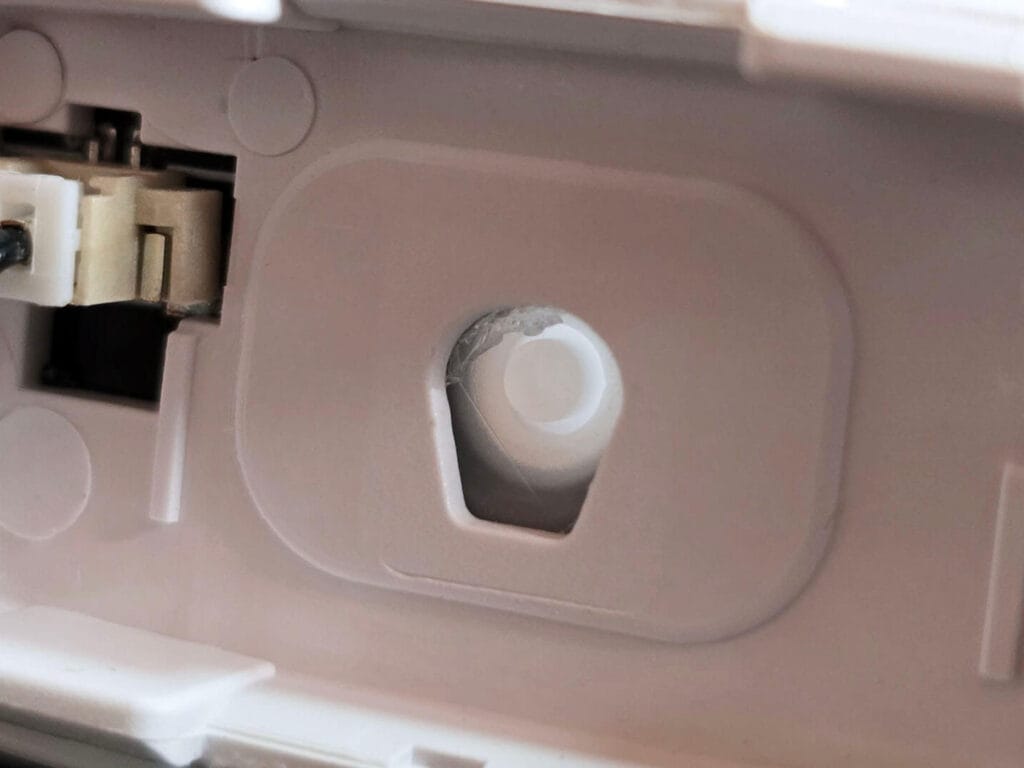
Home Assistant Integration
The Tuya SJ100 Zigbee Rain Sensor is supported in both ZHA and Zigbee2MQTT in Home Assistant. While there is no official converter or quirk applied to this device out of the box, its fully functional and operational as is. It is identified as a water leak sensor, which, it kind off is.
Zigbee2MQTT
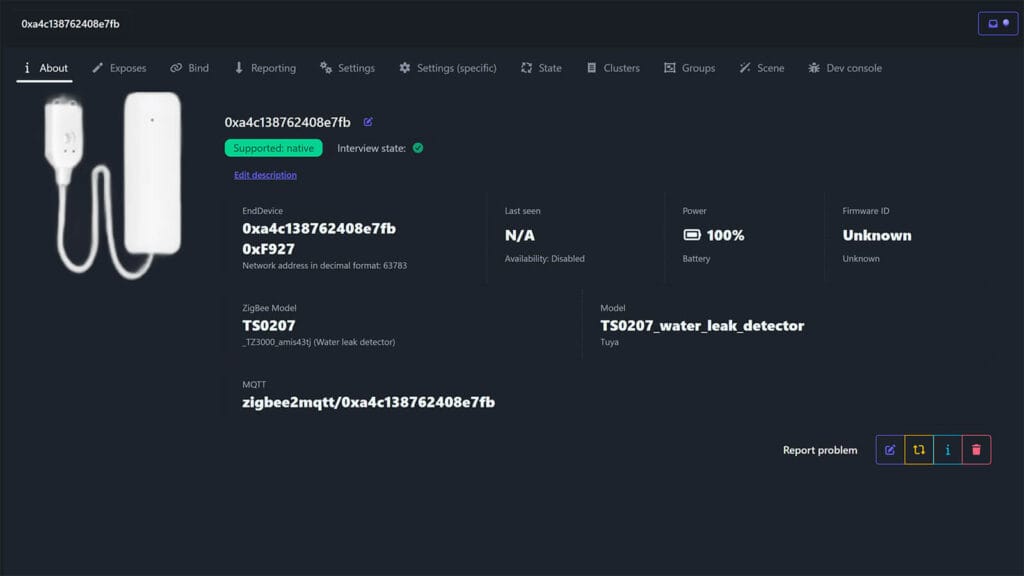
Once paired to Zigbee2MQTT, the device is identified as Zigbee model TS0207 and model TS0207_water_leak_detector. As I mentioned above, it recycles a converter from a Tuya water leak sensor in Zigbee2MQTT. Obviously, it’s an EndDevice, unable to relay traffic back to the coordinator from adjacent devices. It exposes the following entities:
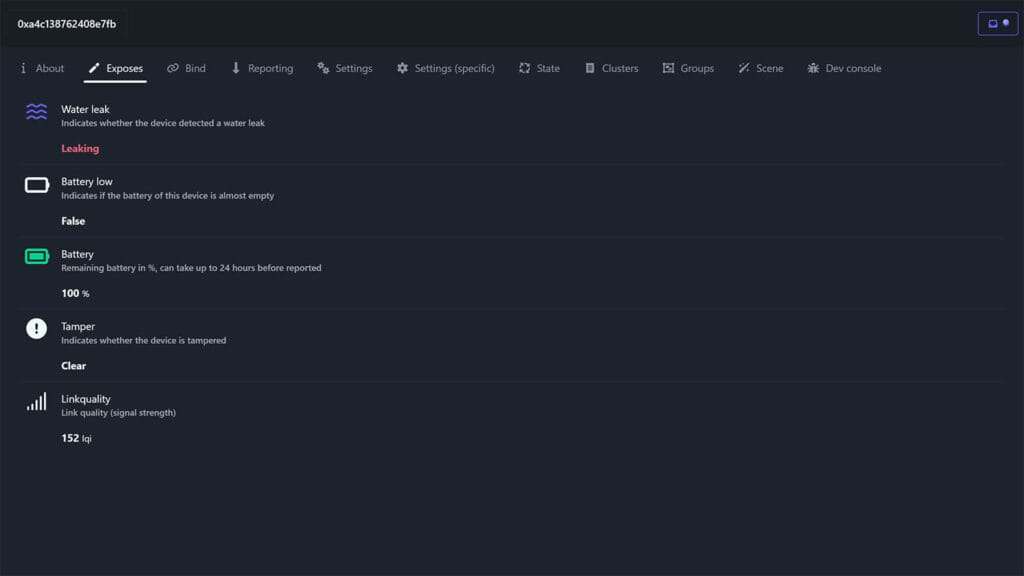
The simple water leak sensor triggers as soon as the detection plate senses even a single drop of water. More importantly, it clears the alert immediately once the water no longer bridges any two points on the plate. This is important to keep in mind, as it can cause false triggers in automations unless a short delay is added to the logic.
The device also provides a low battery warning and a battery percentage entity. Like most battery-powered Zigbee sensors, these values update slowly and may take some time to reflect changes. The tamper switch, on the other hand, is inactive. It’s a remnant from the generic Tuya water leak sensor converter that this device is based on.
ZHA
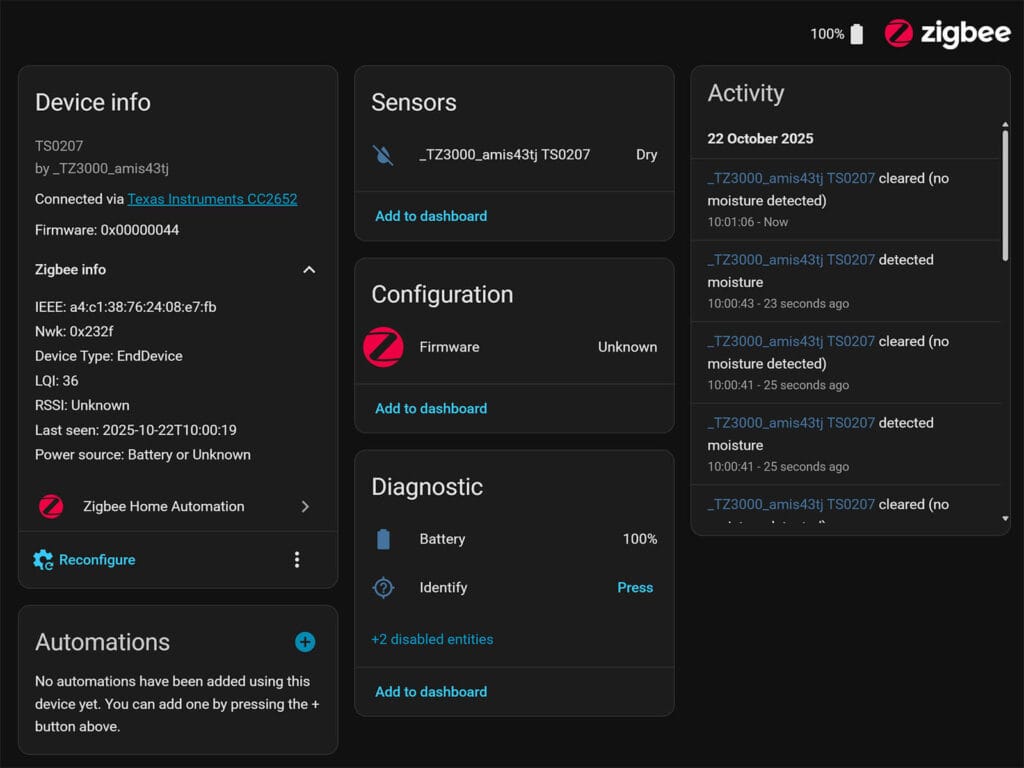
As usual, ZHA exposes fewer entities compared to Z2M. There’s no separate low battery alarm entity, though that’s not really necessary here. Fortunately, the rain sensor entity is available, along with the battery level sensor. For this particular device, those two are all you need.
Testing the IP67 seal
So far, so good. The device works well, reacts instantly to water detection, and clears its state without any issues. There’s no network flooding or strange behavior, so from a Zigbee standpoint, it performs reliably as a rain detector. However, the IP67 claim made me very curious, so I did what any good reviewer does:
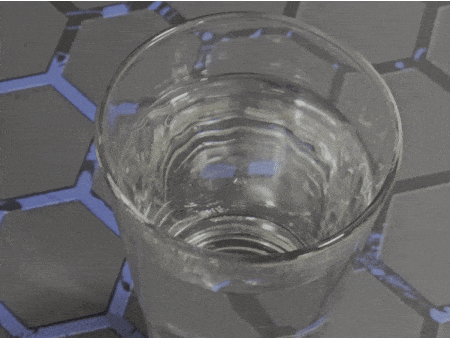
Since an IP67-rated device should be able to withstand immersion in water for up to 30 minutes, I tried exactly that. I submerged the sensor in a glass of water to see if it would survive or get damaged. Here’s a few images:
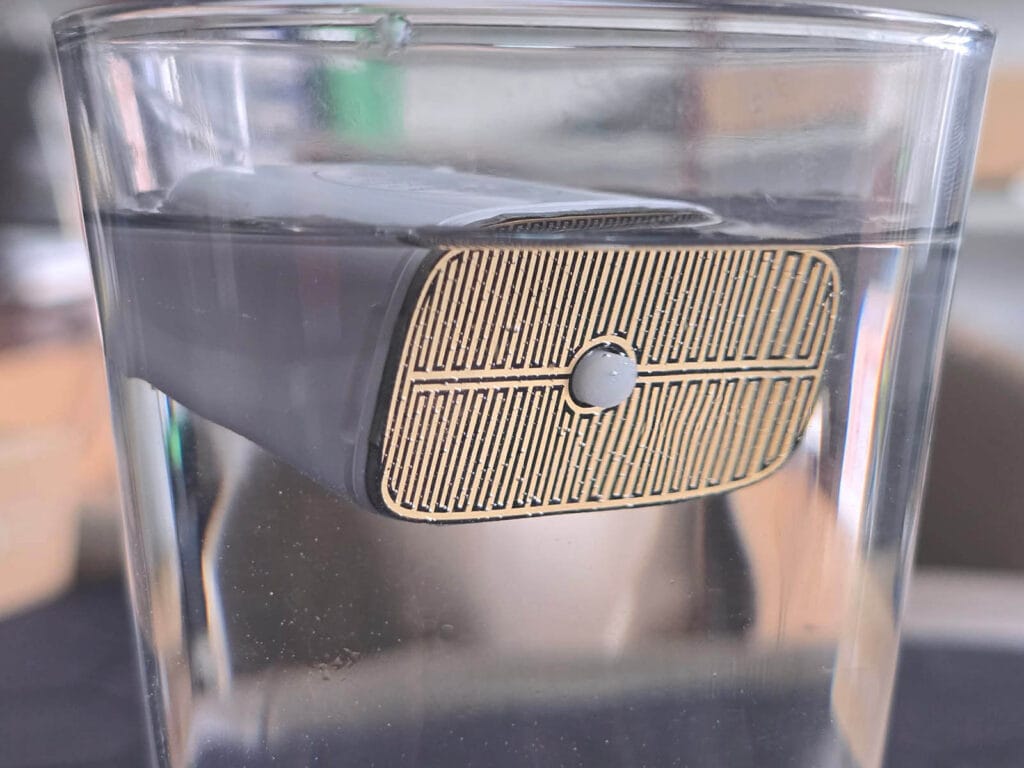
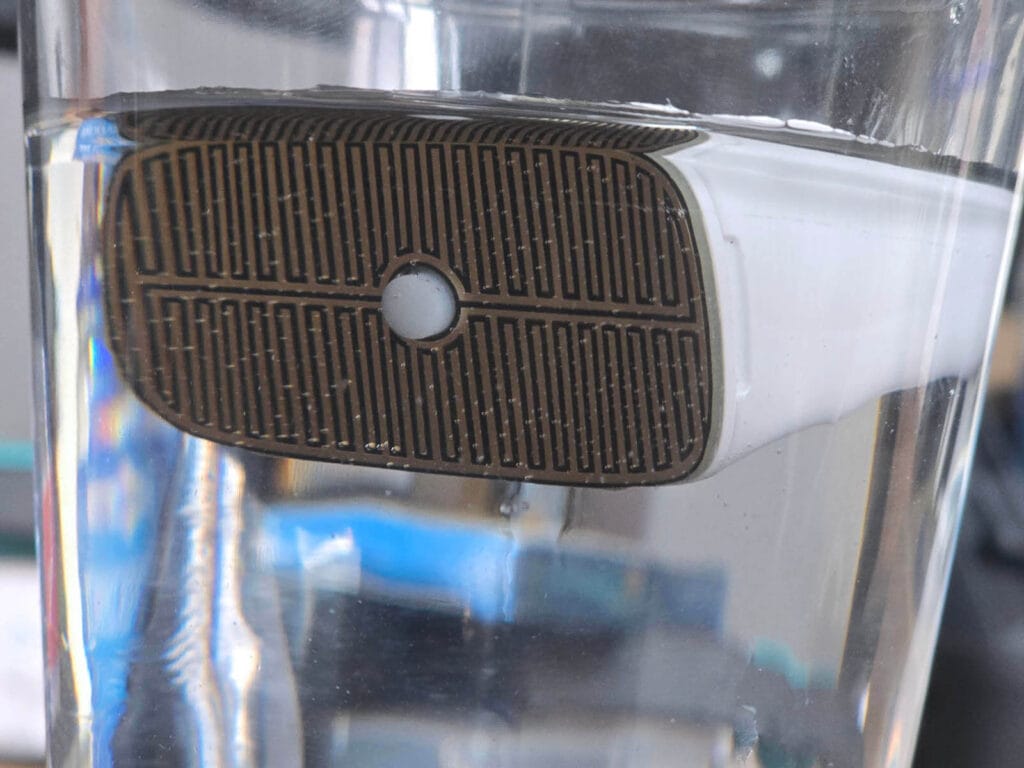
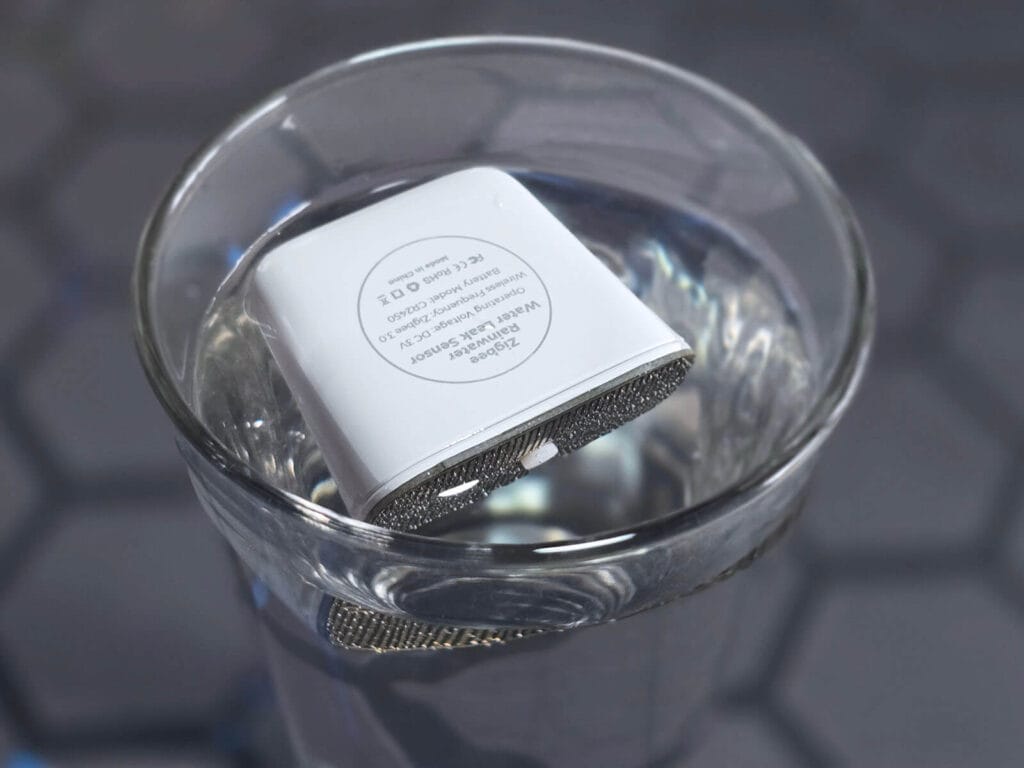
Interestingly, the device floated on the surface of the water because it’s very light and mostly filled with air. The detection plate was still submerged enough to get wet if the seal failed. However, it didn’t. No air bubbles appeared during the test, and the seal held perfectly even after 30 minutes. When I opened the case afterward, there was no sign of moisture or water inside the device at all.
Realistically, this device will never be submerged in water if installed properly. It’s designed to be mounted on a window frame, wall, or door frame, where rainwater would only drip across the detection plate. Based on that, it should easily withstand rain and splashes from any direction without any issues. This is a win for the Tuya SJ100 Zigbee Rain Sensor!
Final Thoughts
The Tuya SJ100 Rain Sensor turned out to be a solid little Zigbee rain detector. I had no doubts about the Zigbee aspect of things, since the ZTU module is known to work reliably within a mesh network without any issues.
What I did question was its claimed IP67 rating. While my simple test doesn’t fully confirm that it meets the official IP67 standard, which requires surviving submersion in water up to one meter deep, it does show that the device is safe to use outdoors for rain detection. It handled exposure to water without any signs of leakage or damage, so you can use it confidently without worrying about moisture getting inside.
With this one, I’ve now tested in total five different Zigbee rain detector devices:
- Tuya Rain Sensor SJ100 (this one)
- eWelink Rain Sensor MS1
- Tuya Solar Rain Sensor XFY
- Tuya Solar Rain Sensor RB-SRAIN01
- Tuya Non-Waterproof Rain Sensor
Out of all those five, I can comfortably recommend the eWelink MS1 or the Tuya SJ100. I’m leaning a bit more towards the SJ100, since it proved its waterproofing convincingly, but the MS1 is a great choice too. To me, solar in these types of devices is overrated. Here’s where you can get both:
Alternative links: AliExpress 3.
Alternative links: AliExpress 2, Amazon.nl.
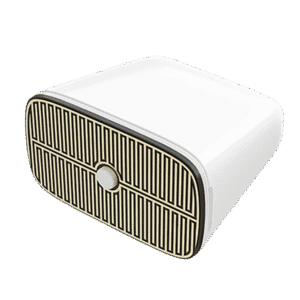
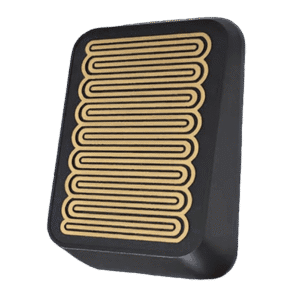
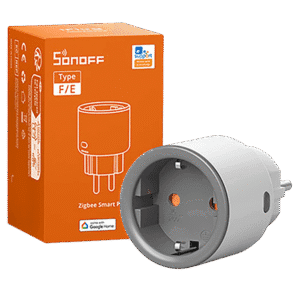
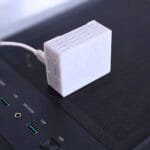
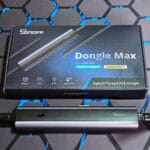
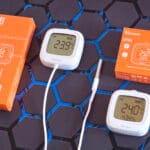
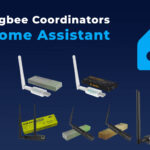

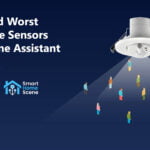

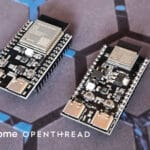
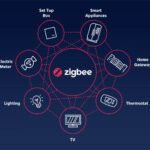
It’s a silly and simple topic, but I’d be interested in a short opinion article about your thoughts on battery types, battery capacity, your rank order preference, and why.
Nice idea, I’ll think about it 🙂
Also do a article on AAA battery cases for 2032 and 2450 battery devices.
One such example.
https://www.printables.com/model/1098300-yet-another-aaa-battery-case-for-xiaomi-bluetoothz
Cool project, but what does it have to do with this device?
I have one as well but does someone has also a 3d printed bracket or mount for it. That would be nice !